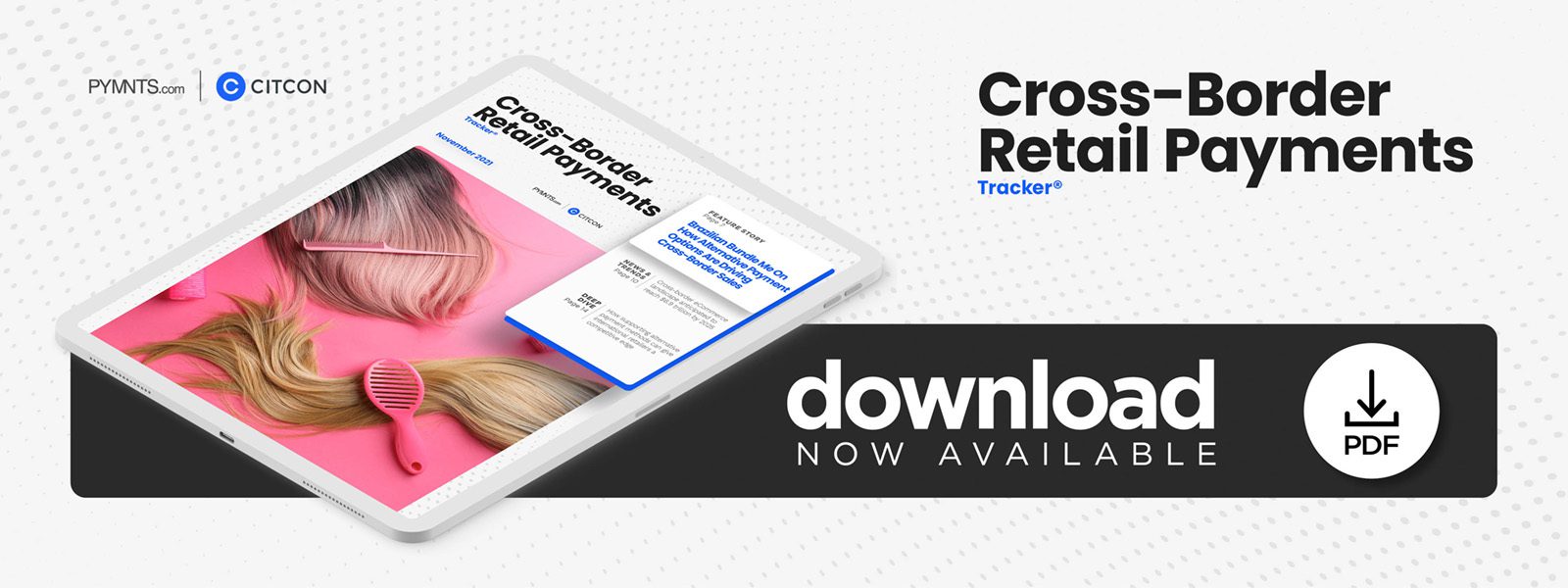Deep Dive: Why Local Payment Methods Will Be Key to Cross-Border eCommerce Growth

Sales via eCommerce channels skyrocketed during the pandemic, bringing cross-border payments on the rise with them.
New data shows that even with travel and trade volumes down, cross-border eCommerce transactions grew 17% in 2020, and consumer-to-business (C2B) cross-border payments are projected to reach $2.8 trillion by 2022. A survey of consumers in 40 different countries found that nearly one-third made more purchases from international online retailers in 2020 because of the pandemic, and 51% plan to increase their cross-border online shopping habits in the future.
Not surprisingly, eCommerce’s rapid rise is fast-tracking the development of cross-border payments solutions. As online shopping continues to take the world by storm, a growing number of global consumers strongly prefer alternative payment methods — including mobile payments, digital wallets, bank transfers and buy now, pay later (BNPL) plans — to traditional card-based solutions.
Supporting these choices on a global scale is complex, however, requiring companies to understand and enable a wide variety of alternative payment methods that are highly specific to each market. More than 450 local payment methods are used around the world, and merchants quickly have realized that simply offering debit or credit card payment options at checkout is no longer enough to satisfy customers.
The following Deep Dive examines the global payments landscape and how the boom in cross-border eCommerce has created both opportunities and challenges for cross-border merchants. It also explores how businesses can make the most of these opportunities by meeting consumers’ demands for local payment methods.
The Global Payments Landscape
Data shows that 57% of eCommerce shoppers made at least one online purchase from another country in the past 12 months, and 22% considered doing so. Forty-three percent of shoppers affirmed that their shift to online shopping during the pandemic encouraged them to be more open to making cross-border purchases.
Serving a global customer base poses difficulties for merchants, however. Smartphone applications and other online channels have created widespread consumer expectations about payment availability, speed and ease that cross-border businesses may struggle to meet. Cross-border payments involve numerous complicated issues that do not apply to domestic payments, including different languages and currencies, taxes, regulations and foreign exchange (FX) fees.
The proliferation of niche market and local payment methods has exacerbated this challenge. In North America, BNPL popularity is driving continued growth of options such as Afterpay, Venmo and PayPal’s Pay in 4, according to a study. U.S. merchants make up nearly half of all cross-border eCommerce in Brazil, Canada, Mexico and South Korea, however. This means that U.S. merchants looking to grow globally must offer methods popular in these countries as well, including Canadian consumer favorites, such as paysafecard, paysafecash and Hyperwallet.
In Western and Central Europe, 45% of online purchases are made with traditional credit or debit cards, with bank transfers making up the next most popular method at 25% and digital wallets following at 23%. In contrast, 60% of consumers in the Asia-Pacific region prefer digital wallets — a greater share than in any other market — with 72% of payments in China alone made with wallets such as Alipay and WeChat Pay. China is a high-growth region for U.S.-based merchants, moreover, as 17% of its cross-border transactions originate from the U.S. Australia and New Zealand also continue their growth as eCommerce giants, with 42% of Australian eCommerce being cross-border.
Latin America quickly is emerging as a major global player in eCommerce as well. Argentina already experienced 76% growth in the market in 2019, with 71% of its eCommerce conducted cross-border. The pandemic sent Latin American eCommerce into hyperdrive, with one report showing an 80% increase in financial app installations in the region from the first quarter of 2020 to Q1 2021. Fourteen percent of online transactions in Latin America involve bank transfers and 60% are card-based, however — indicators of the continued popularity of cash and local bank cards for the region’s many consumers who remain unbanked. Latin America offers a significant opportunity for merchants that can rise to meet its local payments challenge, as data projects digital retail sales of $160 billion in the region by the end of 2025.
Tailoring Alternative Payment Method Solutions for Global Growth
Merchants looking to catch the attention of new customers must fully understand the regional preferences of each market they aim to serve, yet many firms lack the technology to support various markets’ preferred payment methods. More than three-quarters of global online purchases are made with local payment methods, so gaining these capabilities is paramount for cross-border merchants.
Global merchants can make checkout experiences more localized by partnering with third-party payment services providers that specialize in enabling cross-border payments. Not all cross-border payments are equal in complexity. Credit cards may seem simple but are in fact one of the most labor-intensive and expensive cross-border payment methods, as currency conversions between acquiring banks and credit card networks require extra work that invariably translates to higher costs.
Mobile wallets authorize users to pay for goods and services online or in-store and include popular financial services such as Alipay, Apple Pay and Google Pay. Some mobile wallets allow consumers to process transactions in a variety of currencies and place orders to and from different regions. Wallet-to-wallet transactions can simplify the process of cross-border payments when the capital is deducted from the mobile wallet and deposited in the seller’s bank account. The right partnership can offer the range of options needed and help minimize their costs.
Personalizing service is becoming necessary to meet consumers’ wants and needs in the global marketplace. Merchants that cater to international audiences can ensure they are checking off all the boxes by enabling customers to use their cross-border payment methods of choice.

